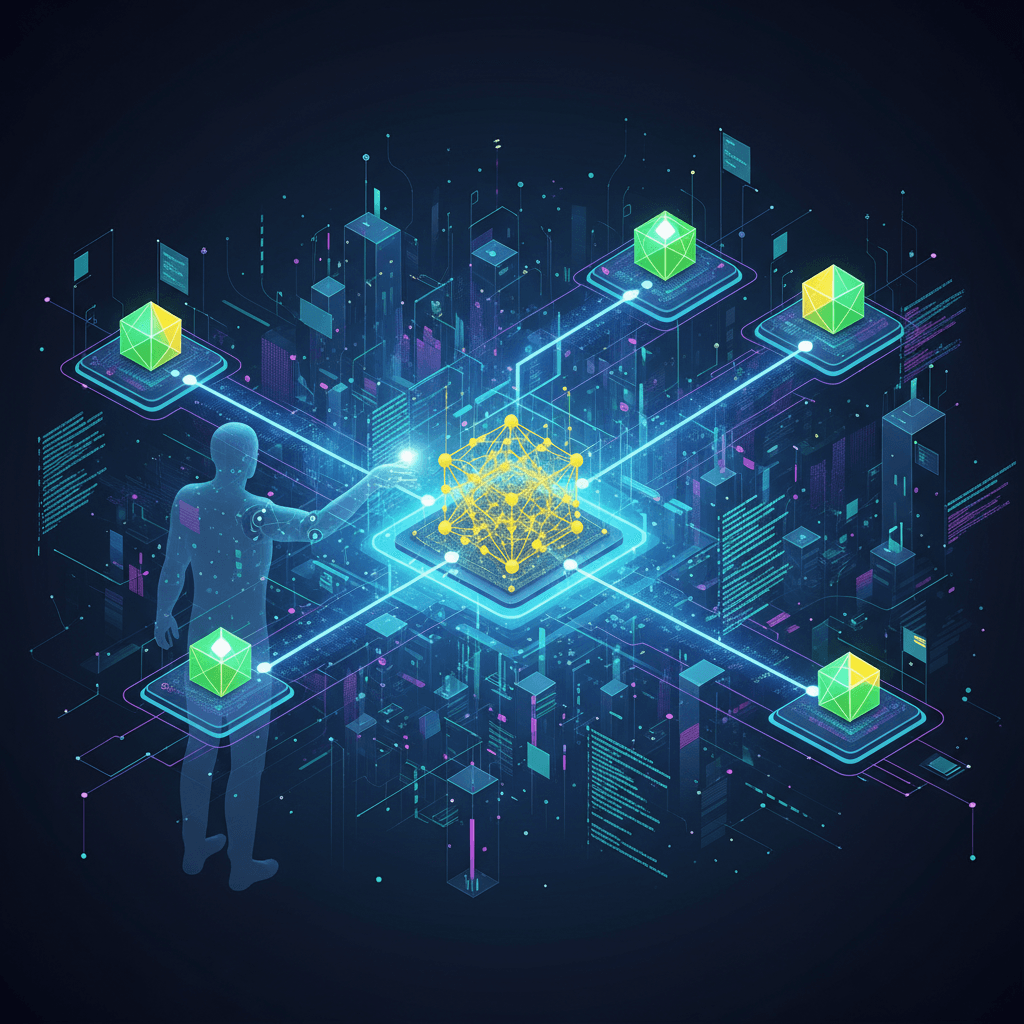Cursor 2.0 Challenges AI Giants with In-House Model, Parallel Agents Redefine Coding
Cursor 2.0 unveils its own Composer AI and parallel agents, strategically challenging rivals with an independent, agent-first development workflow.
October 30, 2025

The landscape of AI-powered software development has been jolted by the release of Cursor 2.0, a significant update to the AI-native code editor that introduces its first proprietary coding model, Composer, and a novel multi-agent architecture. This move signals a deliberate strategic pivot for the company, Anysphere, away from its reliance on third-party models from providers like OpenAI and Anthropic, aiming to create a more integrated and efficient coding environment. The update redesigns the development workflow to be "centered around agents rather than files," a fundamental shift intended to let developers focus on outcomes while AI agents manage the implementation details.[1][2]
At the core of this release is Composer, a new in-house large language model built specifically for the demands of AI-driven coding.[3][4] Cursor claims the model is four times faster than other models of similar intelligence, capable of completing most conversational turns or coding tasks in under 30 seconds.[1][5][6] This emphasis on low latency is designed to keep developers in a state of flow, enabling rapid iteration and feedback.[1][6] Composer is described as a mixture-of-experts (MoE) model that was trained using reinforcement learning and given access to a suite of tools like codebase-wide semantic search, which allows it to better understand and work within large, complex codebases—a common failing of many generative AI assistants.[1][5] Early testers have reportedly praised the ability to iterate quickly and have shown growing trust in Composer for handling complex, multi-step programming tasks.[1][3] While the company states Composer is a "frontier model," its performance claims are based on an internal benchmark, not yet verified by public, standardized tests.[5][7] This shift towards proprietary technology is a significant step for Cursor, which previously integrated models from OpenAI, Anthropic, Google, and xAI, and represents a bid for greater independence and product differentiation in a competitive market.[8][3]
Complementing the new model is a completely redesigned user interface in Cursor 2.0 that introduces "parallel agents."[9][2] This new system allows a developer to run up to eight AI agents simultaneously on a single task without them interfering with one another.[9][5] The technical underpinning of this feature is the use of "git worktrees" or remote machines, which create isolated environments for each agent, effectively giving each one its own copy of the codebase to work on.[10][5][6] This parallel approach opens up new workflows for developers. For instance, a developer can assign the same complex problem to multiple different models at once—such as Composer, GPT-5, and a Claude model—and then review the various outputs to select the best solution.[10][7] Cursor has found that this "best-of-N" approach can significantly improve the final quality of the code, especially for more difficult tasks.[1][8] The new interface is built to manage this multi-agent activity, shifting the focus from a traditional file-based view to an agent-centric one where the developer's primary role becomes managing and reviewing the work of these autonomous agents.[1][11] Recognizing that this new paradigm creates bottlenecks around code review and testing, Cursor 2.0 also includes features to more easily review agent-made changes and a native browser tool that allows an agent to test its own work and iterate until a correct result is achieved.[9][1][2]
This strategic overhaul has broader implications for the AI industry and the future of software development. By building its own model, Cursor is directly challenging its previous partners and now direct competitors, OpenAI and Anthropic, both of which also offer AI coding assistants.[8] This move toward vertical integration reflects a maturing market where relying solely on third-party APIs is seen as a strategic vulnerability.[8][3] The introduction of a multi-agent, parallel workflow is a significant bet on how developers will interact with AI in the future, moving beyond a simple conversational assistant to an orchestrator of multiple specialized agents.[8][6] This agent-first philosophy is also reflected in other new features, including voice mode for hands-free coding, shareable team commands for automation, and improved prompt management.[9][5] However, the increased speed and autonomy of AI agents also raises concerns. The release coincided with research from Forrester highlighting that 45% of AI-generated code contains security weaknesses, pointing to a growing gap between the velocity of AI code generation and the ability to ensure its security and quality.[8]
In conclusion, Cursor 2.0 represents a bold reimagining of the AI-assisted coding experience. With the introduction of the fast, purpose-built Composer model and the innovative parallel agents feature, the platform moves decisively from being an integrator of external AI tools to a comprehensive, in-house ecosystem for software development. This strategic pivot reduces dependency on larger AI labs and carves out a distinct vision for an "agentic" development environment where human developers oversee a team of AI agents working in concert. While the long-term success of this approach will depend on the real-world performance of Composer and the adoption of the new multi-agent workflow, Cursor has clearly defined the next battleground for AI coding assistants: a future built not just on the intelligence of a single model, but on the coordinated power of many.